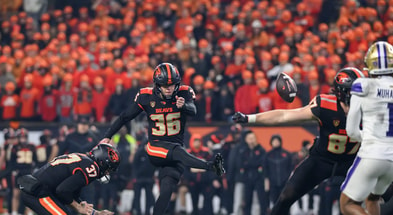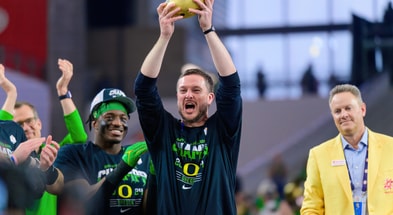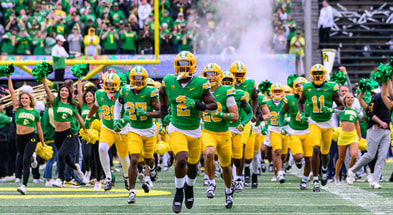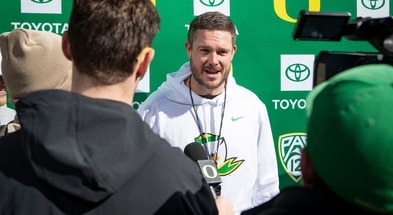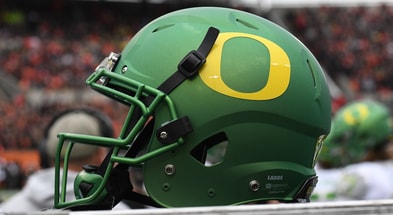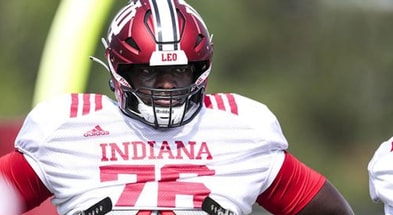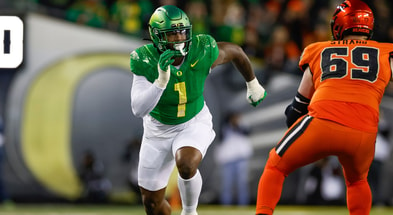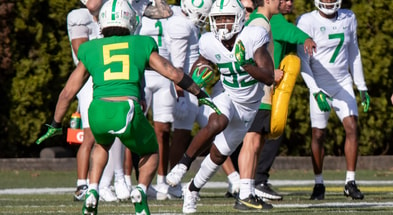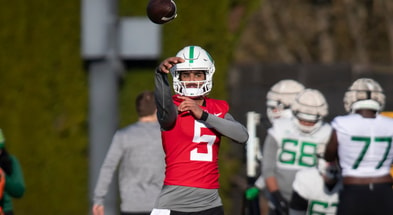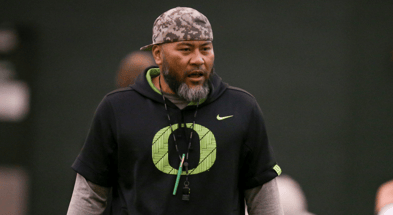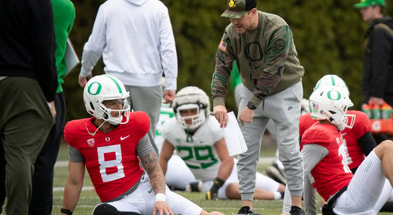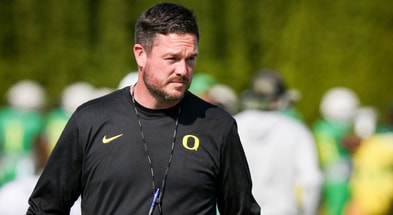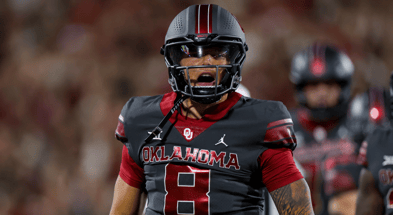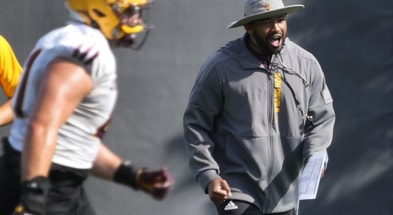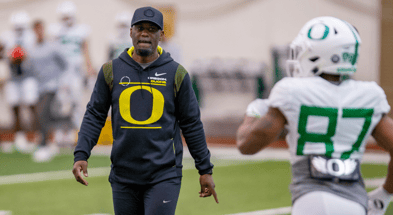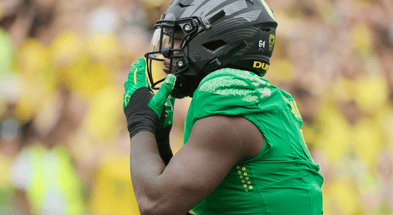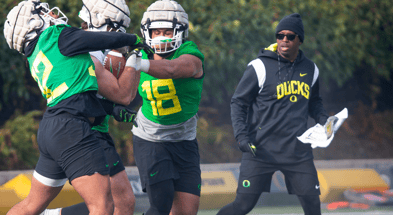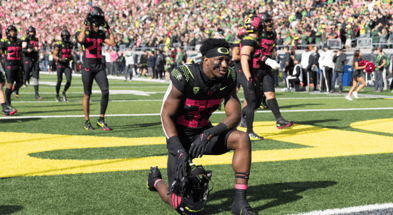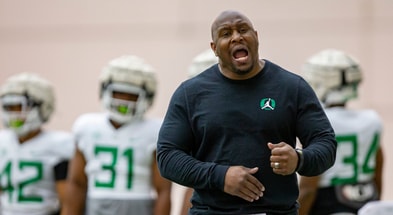Oregon excelling offensively despite lack of true No. 1 receiver
Through four games, Oregon’s receiving stats paint an interesting picture.
In total 18 different Ducks have caught a pass this season. For context, only 12 different Ducks did in 2020. Oregon’s upcoming opponent, Stanford, has 11 different players who have caught passes. Last week’s opponent, Arizona, has 12.
Oregon is spreading the ball around as much as any team in the country. It has been effective in doing so, but all that distribution comes at a cost.
Johnny Johnson III is the only player on the team who has caught 10 or more passes. No other player has seven catches, and Johnson (148) and Jaylon Redd (103) are the only players with more than 100 receiving yards.
In a sport where receivers are typically judged harshly when they don’t produce statistically, it’s easy to imagine Oregon’s receiver room being a moody bunch at the moment.
But they aren’t. No player has clamored for more touches — at least not publicly — and the No. 3 Ducks are embracing an approach that has helped them to a perfect 4-0 start. As far as they see it, that’s the only stat that matters.
“Right now, we’ve got a hungry group of dogs in our receiver room,” Redd said Wednesday. “We all have to have a mindset that, even though we have such a good group of guys, we have to make the most of every rep we get.
“We’ve got to take each rep like it might be the only one we get all game. We’ve got so many guys rolling in and out, and we’ve got great running backs.”
The raw statistical output that Oregon’s passing attack has produced won’t blow anybody away; the Ducks’ 217 passing yards-per-game rank 83rd in the nation among FBS teams.
But only eight teams have thrown more passing touchdowns than Oregon in 2021. Anthony Brown has yet to turn the ball over this season, and the Ducks are finding ways to score the ball when they get into the red zone thanks to some slick playcalling from offensive coordinator Joe Moorhead.
Oregon’s 18 red-zone attempts have led to 14 touchdowns this season. Only five teams in the country have more red-zone scores and only 15 teams are converting their red-zone chances into points at a higher rate.
In terms of scoring, Oregon’s offense is producing 38.8 points per game, which is tied for 20th in the nation.
“We’ve just got to keep our heads up,” Redd said. “Everybody wants the ball, but you can’t be selfish with winning games. That’s going to help us at the end of the day.”
Earlier this week Oregon coach Mario Cristobal was asked if not having an established No. 1 wide receiver could be hurting the team. He disagreed with that notion and gave a spirited response.
“Anything other than doing whatever is best to win a game from a strategical standpoint is all secondary,” Cirstobal said. “We always try to spread the ball around as much as we can because that is effective in helping you win a game.
“If you win, you really come out of there not trying to have any regrets. … There’s not much focus on creating storylines or anything of that nature. Everything we do is for the players, for the program and to win the game.”
Oregon receivers coach Bryan McClendon said during preseason camp that his receivers will always earn what they get in terms of playing time.
“I tell them, at the end of the day, this isn’t the YMCA. Everybody doesn’t play,” McClendon said in August. “The guys that give us the best chance to win are the guys who are going to get into the game.”
So far, that has rung true. In terms of sheer talent, the Ducks have an embarrassment of riches at receiver, tight end, and running back. But not all of that talent is showing up in the box score.
Devon Williams, Troy Franklin, and Dont’e Thornton were the No. 40, 41 and 57 players in the nation for their respective recruiting classes and all were consensus 4-star prospects.
Between the three of them, they have nine catches for 137 yards.
Johnson, a former 3-star signee, was the No. 1,534 prospect in the class of 2017 and has more catches than Williams, Franklin and Thornton combined.
The message is clear: McClendon and offensive coordinator Joe Moorhead are running out the players who they think are going to get the job done. Cristobal said during the week that Williams, who led the Ducks in receiving yards in 2020, did not play against Arizona because “he was not part of the rotation for the game.” He did not elaborate further on that comment.
The coaching staff is still looking for areas of improvement in the passing game. Brown went 10-for-21 passing against Arizona, and Moorhead said that simply isn’t good enough.
“Our goal and barometer, we would like the quarterback to be up around 65-percent — that’s kind of the standard I’ve always used,” Moorhead said. “I think (Brown) is right around 57, 58 percent now for the season. … We’re 4-0 with him as a starter and he’s making a positive impact with his feet.
“We want to continue to work to elevate the competition percentage, but not at the expense of us being the number one scoring offense in the conference and the most important statistic: the four in the left column and the zero in the right column.”
Of course, at some point, an Oregon receiver is going to have a breakout game statistically. No Duck has eclipsed the 100-yard mark this season, but the Ducks are beginning to flash some big-play potential.
On Oregon’s third play from scrimmage last weekend, Brown found Redd for a 65-yard touchdown by making a read that Redd said the Ducks had anticipated for the entire week leading up to that game.
That was Redd’s only catch of the night. Of course, he wants more, but as long as the wins keep coming, all is well in Oregon’s receiver room.
“Whenever it’s a pass play called, you should be running your best route. Give it your all like it’s the last rep you’ll have all season,” Redd said. “That’s how you’ve got to take it — like a pit bull who’s never been let off the leash, every single rep.”
